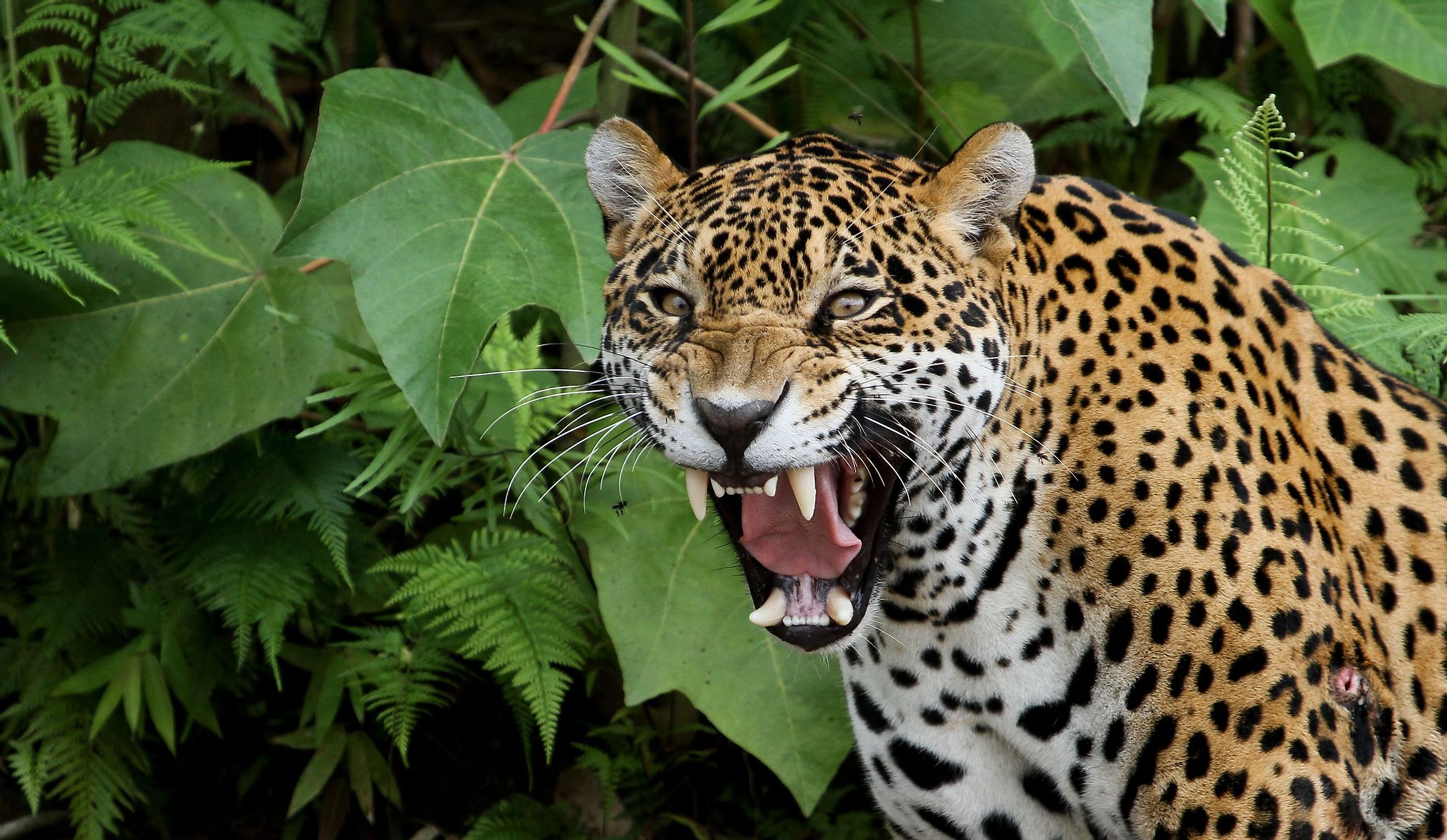
The Most Dangerous Animals of the Amazon Rainforest
Danger lurks around every corner in the Amazon, whether you are an insect, a clever mouse, or even a human. Millions of years of adaptations have granted the Amazon's best hunters extraordinary abilities, including the control of electricity and potent venoms. More amazing yet, a number of human tribes have managed to survive in this environment until today, and they often use each of these creatures as a symbol of strength or skill.
Anaconda
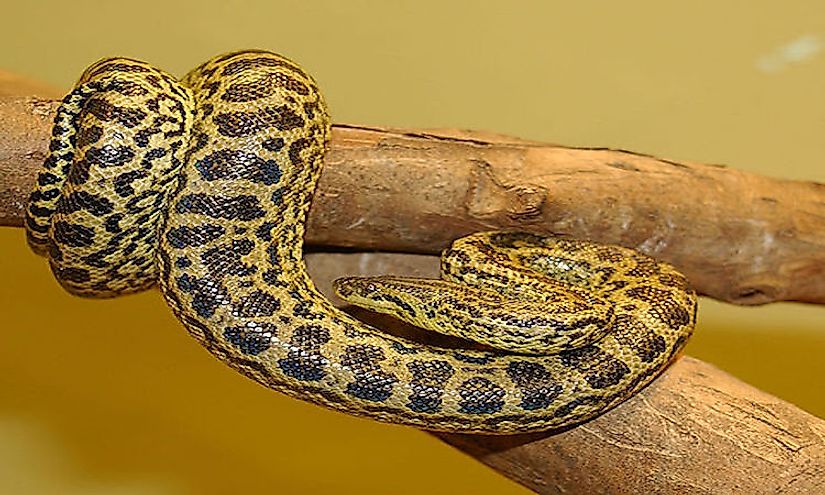
Pound for pound, Anaconda are the largest snakes in the world, weighing in at up to 250 kg (550 lbs). They prefer habitats of swamps and slow-moving rivers. Incredibly, the massive snake can grow up to 9 meters (30 feet) long and wears distinctively green, black, and yellow patterning. During the dry season, anacondas engage in mating rituals, and females give birth to live young. Their hunting method involves constricting and swallowing large prey, which includes capybaras and caimans. While they are known to avoid human interaction, they can become defensive when threatened — the Green species is one of the few snakes in the world capable of preying on humans.
Piranha
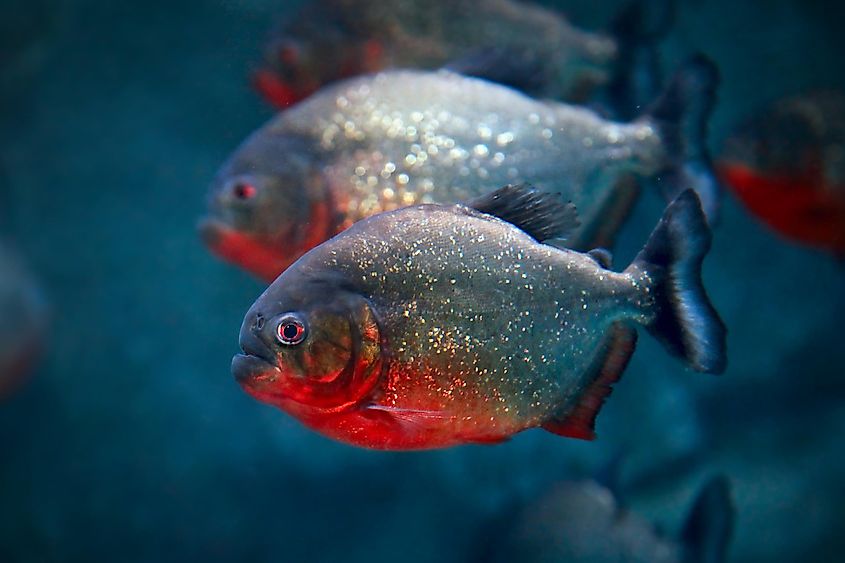
Piranhas, often feared for their aggressive feeding habits, exhibit a behavior known as a feeding frenzy, primarily when food is scarce. The frenzy is more organized than it appears: individuals coordinate by taking turns, one bite after another, until all members experience a shared amount of rotations. They predominantly consume fish, but their diet can include insects, crustaceans, and even small mammals. In their natural habitat, piranhas favor the slow-moving rivers and lakes of the rainforest, where they thrive in warm, shallow waters. Remarkably social, these fish form schools that can group in the hundreds, providing safety in numbers and efficiency in hunting. Moreover, the reproductive cycle of piranhas is fascinating, as spawning only occurs when water levels rise during the rainy season. They exhibit significant variation in size, appearance, and species characteristics, with some species reaching up to 50 cm long. Contrary to popular belief, human encounters with piranhas seldom result in serious injury, with most myths about their ferocity being exaggerated. Still, it would be wise to avoid them, lest you experience what it is like to be sushi.
Jaguar
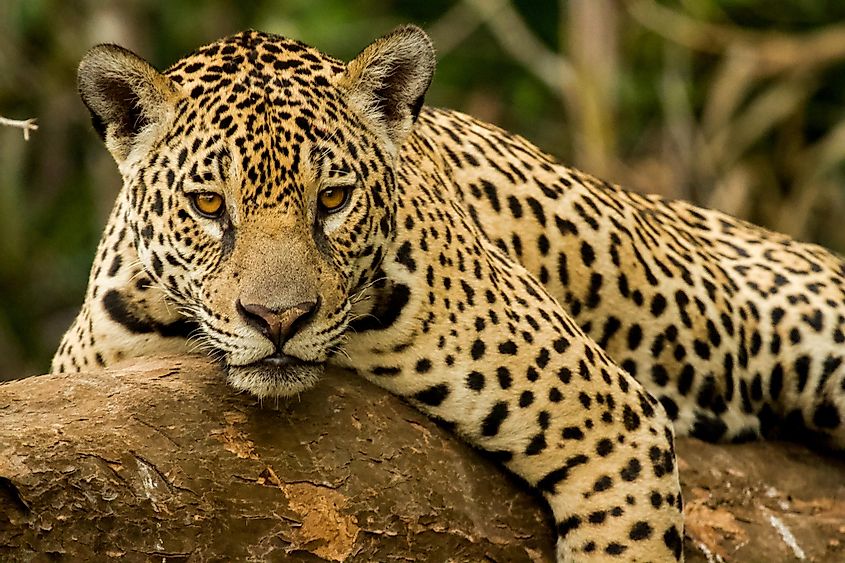
Jaguars are top predators that hunt terrestrial mammals like deer and peccaries. These big cats (weighing between 36 and 158 kilograms) are equipped with powerful jaws that are capable of piercing the skulls and shells of their targets. Aesthetically, Jaguars are coated in hundreds of "spotted spots" that act as camouflage while they climb and roam through tree growth. Regarding that environment, Jaguars favor dense rainforest and riverine terrain, as their athleticism helps them seamlessly navigate these chaotic environments. They are solitary and territorial animals, often covering territories up to 50 square miles, and females have a gestation period of around 100 days, after which they give birth to 1-4 cubs.
Poison Dart Frog
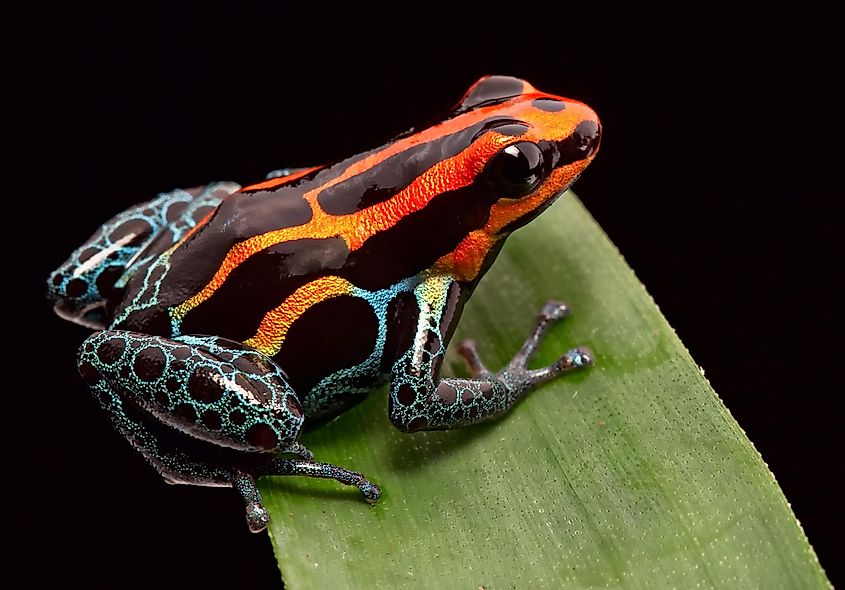
The poison dart frog is easily recognizable by its brightly colored skin, which can display a spectrum of hues from yellow to blue. These colors are a warning sign of the potent toxins secreted through their skin, lethal to many predators. Although these frogs are carnivorous, mainly consuming insects like ants and termites, they luckily are not nearly large enough to target people: they weigh barely 3 grams and are four centimeters in length. Their reproductive process involves laying eggs in moist environments such as on leaves, and the males then carry the eggs into a water source. Therefore, it makes sense that these frogs thrive in the humid undergrowth areas of the rainforest.
Black Caiman
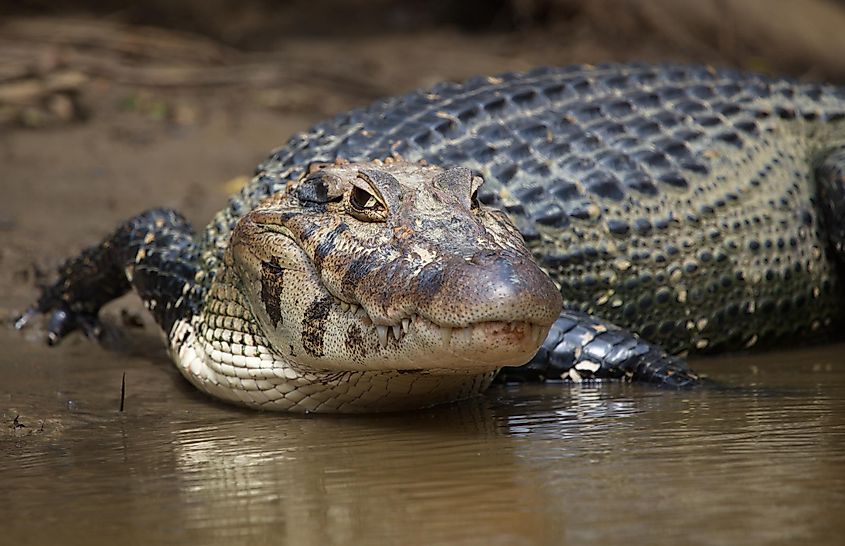
With any luck, you will not face one of these beasts 'in a while, crocodile.' The Black Caiman is the largest predator in the Amazon basin, with some individuals exceeding 5 meters (16 feet) in length and 450 kilograms (1000 pounds) in weight. This apex predator, a crocodilian reptile, primarily hunts fish, reptiles, and sometimes large mammals. Females build nests along riverbanks, vigilantly guarding their eggs until they hatch. Their preferred habitat includes freshwater environments like rivers and lakes. Despite being a key species in maintaining the ecological balance of aquatic life, their numbers have declined due to hunting for their skin. Furthermore, the Black Caiman holds a weighty cultural value for indigenous communities, who often revere the creature as a spiritual symbol of strength and ferocity.
Electric Eel
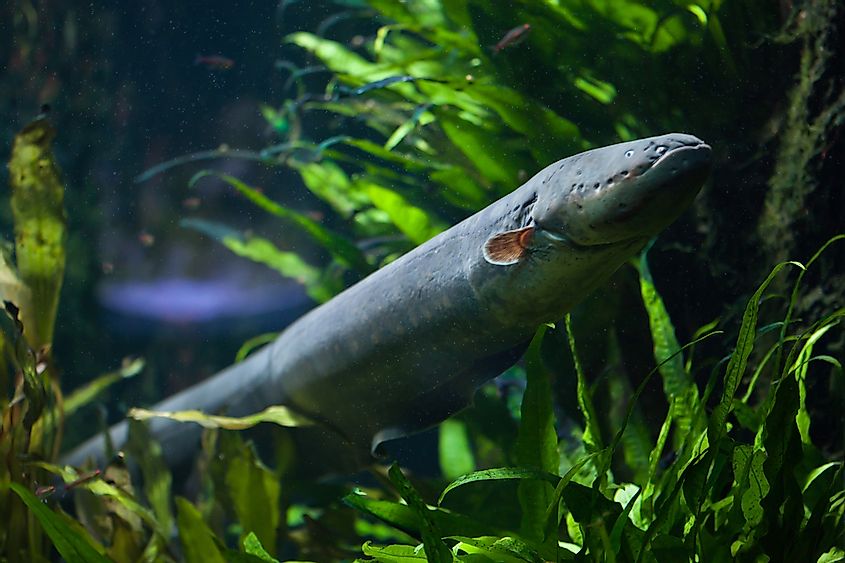
With a potential output of 600 volts, which is five times the amount needed to incapacitate a human, the Electric Eel is notorious for its tendency to produce electric shocks. These incredible traits act as a defense mechanism and a means of stunning prey, and it works through their ability to discharge all electrolytes simultaneously. These eels, that can be 2.5 meters (8 feet) long and 18 kilograms (40 pounds) heavy, typically inhabit the muddy bottoms of calm waters in the Amazon, and their diet consists mainly of fish and small amphibians. During the dry season, males create nests for the eggs, and in adulthood, electric eels can grow up to 2 meters (6.5 feet) in length. Last, while eels are a common cuisine in Japan, Europe, and China, electric eels are not typically consumed.
Bullet Ant
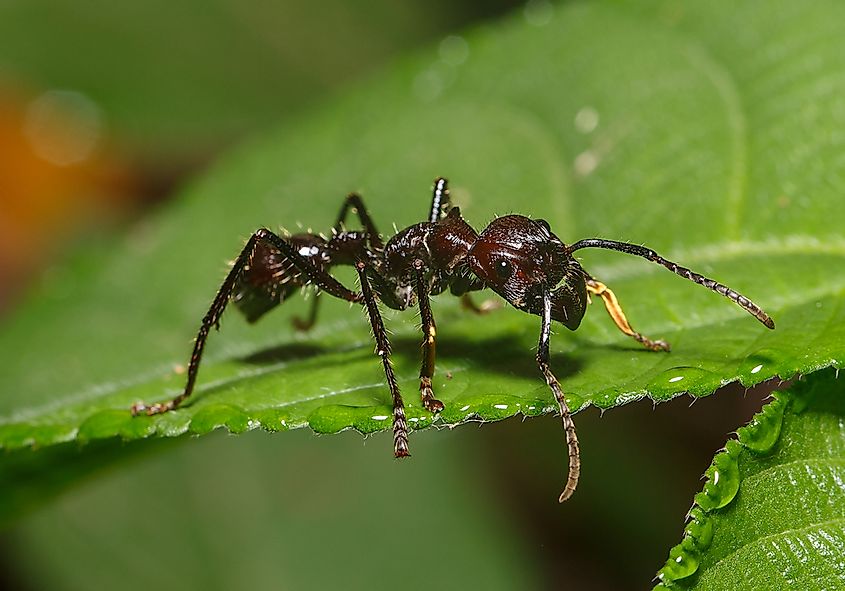
Known for the excruciating pain caused by its sting, which can last up to 24 hours, the Bullet Ant is a creature to be wary of. These ants live in large colonies that, fascinatingly, have developed a well-defined hierarchical structure. Small workers tend to internal labors, while larger members forage and defend, and everything ultimately revolves around the queen bullet ant who is tasked with producing viable colony eggs. Their diet includes nectar, small insects, and plant juices. As the species is predominantly found in the lowlands of the rainforest, Bullet Ants contribute to the environment by aiding in seed dispersal and soil aeration. Interestingly, certain indigenous groups use these ants in initiation rituals, such as when boys around the age of 12 subject themselves to many stings for periods as long as 10 minutes.
Brazilian Wandering Spider
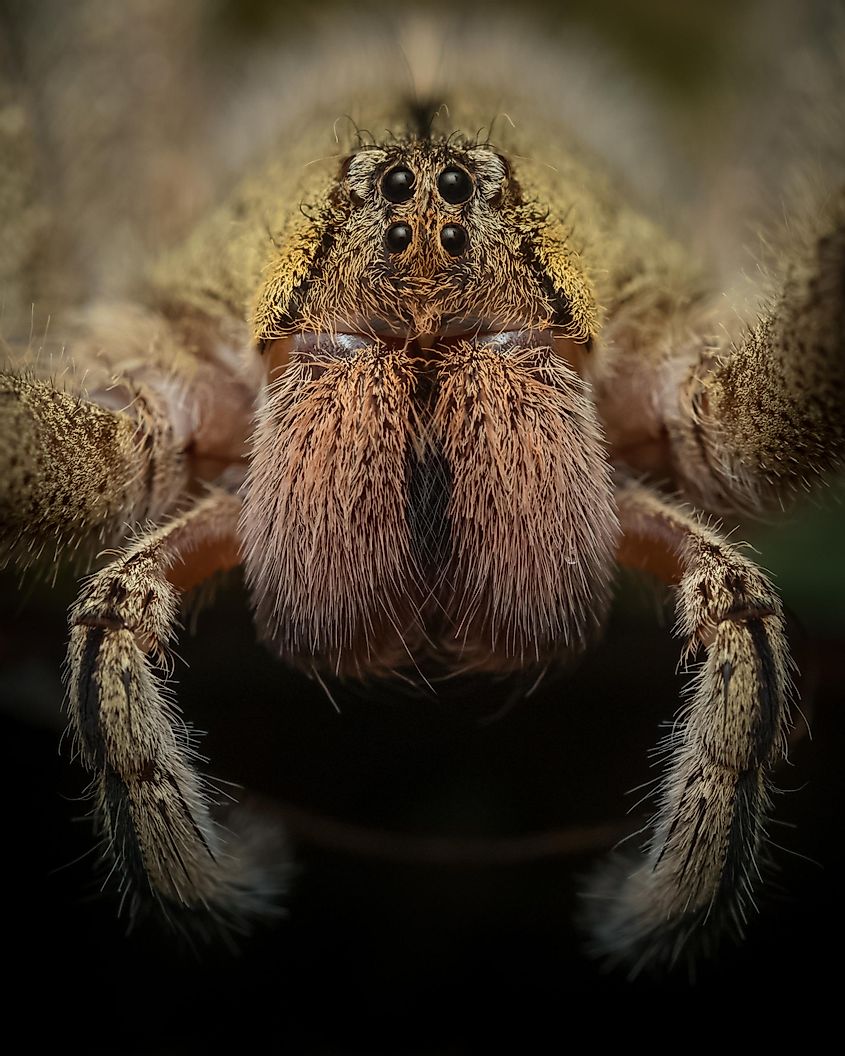
As one of the most venomous spiders in the world, the Brazilian Wandering Spider poses a significant danger due to its potent venom. This venom can cause excruciating pain and, in rare cases, may lead to fatal consequences for unlucky humans. Notably, this spider engages in nocturnal hunts, actively pursuing insects, amphibians, and small mammals like mice. The females of this species exhibit a protective nature, vigilantly guarding their egg sacs and nurturing their young spiderlings. Physically, these spiders are easily recognizable by their large size and distinctly hairy bodies. Brazillian Wandering Spiders also tend to sprint and pounce on their prey, a hunting behavior that entomologists accurately describe as 'wolf-like.'
Harpy Eagle
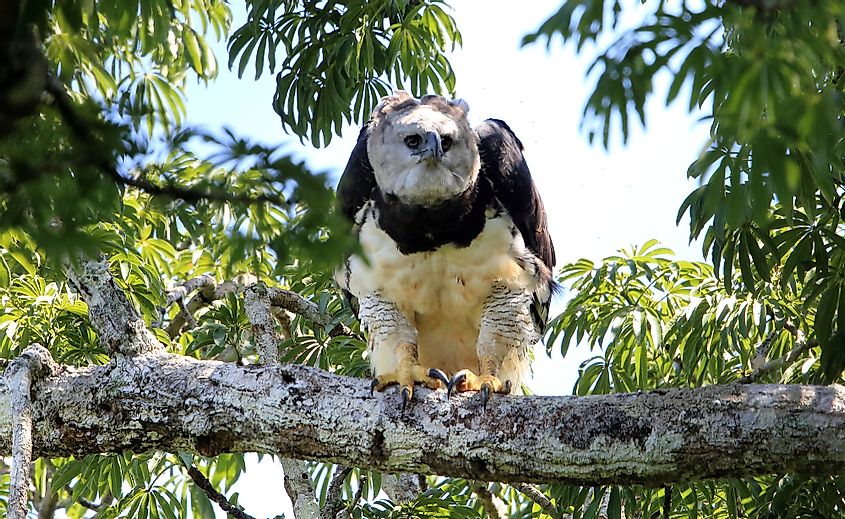
"The Queen of the Birds:" In the realm of large eagles, the Harpy Eagle is famous for its two-meter (6.5-foot) wingspan. Additionally, the creature utilizes formidable hunting skills, and it preys primarily on arboreal animals like monkeys and sloths, as well as anything it can physically carry. This bird of prey exhibits remarkable agility in snatching its prey directly from the trees, giving them no chance to escape. Harpy Eagles construct their nests high in the emergent trees of the rainforest, creating massive structures that are hard to miss. While they serve the purpose of controlling mammal populations, they are occasionally targeted by farmers who view them as a menace to livestock. On the softer side, these fearsome creatures are monogamous, with bonded pairs sticking together for roughly three decades, and individuals live up to 45 years.
Bushmaster Snake
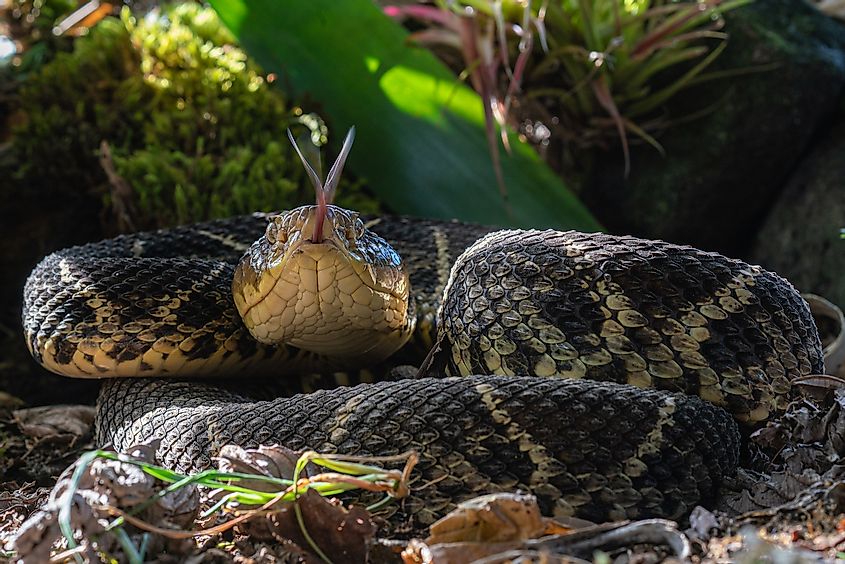
The Bushmaster Snake is another lethal resident of the Amazon rainforest, known for delivering a substantial amount of potent venom in its bite. This snake prefers a moist and shady rainforest environment and is predominantly nocturnal, so watch where you step. Its diet consists mainly of small mammals and birds, which it efficiently hunts. The Bushmaster is notably one of the longest venomous snakes, capable of reaching lengths exceeding three and a half meters (almost 12 feet). Regarding reproduction, the females lay eggs in burrows and exhibit maternal instincts by staying with them until they hatch, which takes between 60 and 78 days. Last, these legendary vipers are capable of multi-bite strikes, which is one of the reasons they are so incredibly deadly.
A typical person might believe a sturdy umbrella is all the gear needed in a rainforest, but after examining these wild animals, a suit of armor might be more appropriate. The remote nature of the Amazon exacerbates how deadly one of these creatures can be because emergency medical aid might be hundreds of kilometers away. Naturally, smaller prey do not stand a chance. For that reason, the deadliest animals in the Amazon Rainforest should be ranked among the most dangerous animals in the world.







